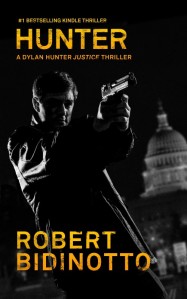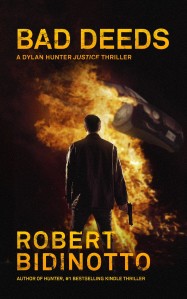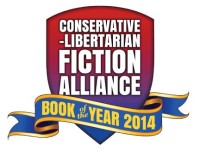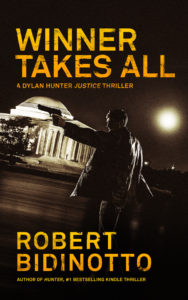Join My Mailing List!
“Vigilante Author” Robert Bidinotto
READ MY DEBUT THRILLER, “HUNTER” — A #1 AMAZON KINDLE BESTSELLER IN “MYSTERIES & THRILLERS,” AND A WALL ST. JOURNAL “TOP 10 FICTION EBOOK”

Listen to the
opening chapter
on Audible:
Kindle edition available
by clicking here.
Trade paperback edition available
by clicking here.
Amazon/Audible audiobook edition available
by clicking here.
Learn how to get the HUNTER audiobook FREE
by clicking here
iTunes audiobook edition available
by clicking here.
German language edition available in U.S. Amazon store
by clicking here
Turkish language trade paperback available in U.S. Amazon store
by clicking here
Read my award-winning thriller “BAD DEEDS” — the exciting sequel to “HUNTER”


Listen to the
opening chapter
on Audible:
Kindle edition available
by clicking here.
Trade paperback edition available
by clicking here.
Amazon/Audible audiobook edition available
by clicking here.
MP3 CD edition available
by clicking here.
Learn how to get the BAD DEEDS audiobook FREE
by clicking here.
iTunes audiobook edition available
by clicking here.
Read “WINNER TAKES ALL” — the third exciting Dylan Hunter thriller!
Listen to the
opening chapter
on Audible:Kindle edition available
by clicking here.Trade paperback edition available
by clicking here.Audible audiobook edition available
by clicking here.iTunes audiobook edition available
by clicking here.MP3 CD edition available
by clicking here.Check Out the Latest Kindle Thrillers!
Your Amazon book purchases through this blog help to support me while I write more Dylan Hunter thrillers -- at no extra cost to you! Please click the link below to scan all the latest bestselling thrillers that are available on Kindle:
BESTSELLING KINDLE THRILLERS
Join AMAZON PRIME!
Join Amazon Prime - Watch Over 40,000 Movies
and TV shows -- many of them FREE -- and enjoy FREE two-day shipping on all your Amazon purchases. Plus, borrow a Kindle ebook FREE every month from the Kindle Owners Lending Library. I'm a happy member. I encourage you to check it out!
Bidinotto Online
Blogroll
Favorite Author Links
Self-Publishing Links
ARCHIVE
-
Recent Posts
Recent Comments
- Its Outlet on Marrying Suspense Thrillers with Romance — Interview with Belle Ami
- the best thing ‘bout BTO… | kentonkilgore.com on Marketing for Authors
- bidinotto on Do I Really Advocate Vigilante Justice?
- Gregory Conterio on Do I Really Advocate Vigilante Justice?
- bidinotto on Opening Scene of WINNER TAKES ALL
Categories
- Announcements
- Audiobooks
- Author profiles
- BAD DEEDS audio
- BAD DEEDS: A Dylan Hunter Thriller
- Biographical
- Book business
- Book samples
- Cultural commentary
- Dylan Hunter Box Set 1-3
- Essays
- Events
- Gifts and Promotions
- Humor
- HUNTER audio
- HUNTER film
- HUNTER: A Thriller
- Inspirational
- Interviews
- Marketing Advice
- Personal Appearances
- Publishing Advice
- Quotations
- Reviews
- Self-Publishing
- Traditional publishing
- Uncategorized
- Vanity publishing scams
- Vigilante fiction
- WINNER TAKES ALL
- Writing Advice
 RSS Feed
RSS FeedMeta

 Photo (c) by Debbie Scott
Photo (c) by Debbie Scott


A Reader’s Guide to Seminal Vigilante Heroes
Not long ago on my Facebook page, I decided to share a bit of my research into major vigilante heroes of fiction. Here is what I came up with, starting with the early and most influential figures in the developing genre:
Vigilante Identity/Real Identity
Robin Hood/Robin of Loxley
The Count of Monte Cristo/Edmond Dantes (1884-86)
The Scarlet Pimpernel/Sir Percy Blakeney (1905)
Zorro/Don Diego de la Vega (1919)
The preceding, in that chronological order, are seminal vigilante figures who inspired the creation of most of those that followed.
Robin Hood was the great granddaddy who served as the prototype of the aristocrat-turned-vigilante, a political patriot fighting oppression by a corrupt political elite. Edmond Dantes was a man betrayed by friends and family, who escaped prison to launch a years-long campaign to avenge himself, under a new identity as a wealthy aristocrat. The Scarlet Pimpernel was a direct literary offspring of Robin Hood, transported from medieval England to Revolutionary France. He was another political patriot turned vigilante, but added what became genre tropes: the foppish, ineffectual aristocrat who operated under a secret identity as a daring swordsman fighting murderous revolutionaries, rescuing their victims, and leaving behind a symbol of his alter-ego: a flower (the Scarlet Pimpernel). He, in turn, was a direct ancestor to Zorro/Don Diego de la Vega), whose creator borrowed all of the preceding tropes and transported his vigilante hero to California.
Robin Hood, the Pimpernel, and Zorro in turn sired countless other lone-wolf vigilantes, most notably including…
The Saint/Simon Templar (1928)
The Shadow/Lamont Cranston (1931)
The Lone Ranger/John Reid (1933)
The Phantom/Christopher (later Kit) Walker (1936)
Superman/Clark Kent (1938)
Batman/Bruce Wayne (1939)
Shane/(call him “Shane”) (1949)
Paladin/ (name never revealed) (1957)
Ragnar Danneskjold/ (from Ayn Rand’s Atlas Shrugged) (1957)
Daredevil/Matt Murdock (1964)
Travis McGee (1964)
Mr. A/Rex Graine (1967)
The Executioner/Mack Bolan (1969)
“Dirty” Harry Callahan (1971)
NYC vigilante/Paul Kersey (1972-74)
The Punisher/Frank Castle (1974)
The Equalizer/Robert McCall (1985)
Jack Reacher (1997)
Bryan Mills (2008)
Dylan Hunter (2011) (You didn’t think I’d omit my own creation, did you?)
…plus countless other comic-book and costumed superheroes, spun off the earlier vigilante prototypes. The Phantom, Superman, and especially Batman were hugely influential in transmitting the genre tropes to their vigilante descendants. Virtually all costumed superheroes operate as vigilantes, sharing the trope of a mundane, real-world person who morphs into someone with extraordinary “powers far beyond the abilities of mortal men.” It’s clear that these comic-book characters owe their popularity to almost universal wish-fulfillment: the empowerment fantasy of rising above one’s mundane self and life circumstances to become someone extraordinary, living a colorful life and doing remarkable deeds.
Apart from comic-book superheroes, common subgroups of vigilantes include private eyes (Phillip Marlowe, Sam Spade, Mike Hammer, Spenser, Elvis Cole, etc.), reporters (Rex Graine, Clark Kent, Dylan Hunter), ex-military or intelligence officers gone freelance (Dylan Hunter, Bob Lee Swagger, Mack Bolan, Mitch Rapp, Scot Harvath, James Reece, Harry Nichols, John Milton, Bryan Mills, etc.), and drifters (Shane, Travis McGee, Jack Reacher, Peter Ash, etc.).
A thematic constant in virtually all these stories is the quest for justice and order in an unjust and chaotic world. The vigilante is a person with “a particular set of skills” who dares to step apart from regular society, taking on powerfully corrupt individuals and institutions, and a feckless or equally corrupt legal system, in order to exact justice for the victimized and oppressed and to restore order in the chaos.
The timeless popularity of the vigilante character — from wandering Ronin, to medieval knights errant, to cowboy drifters, to political rebels, to private eyes, and on and on — is a testament to the eternal human yearning for justice and order in an unjust and chaotic world. The image of the lone champion of justice continues to inspire and encourage countless millions — and refashioning such heroes for new generations has become a vocation for thousands of writers, including me.